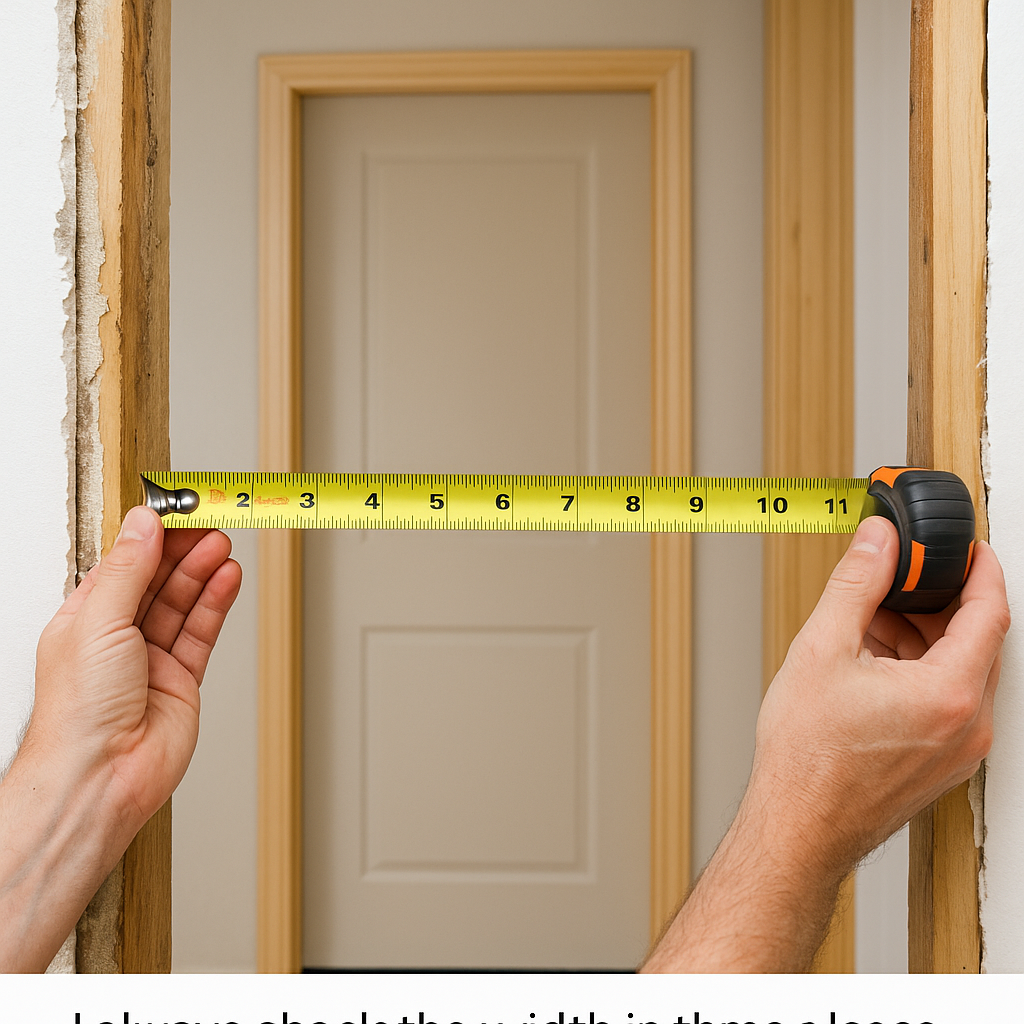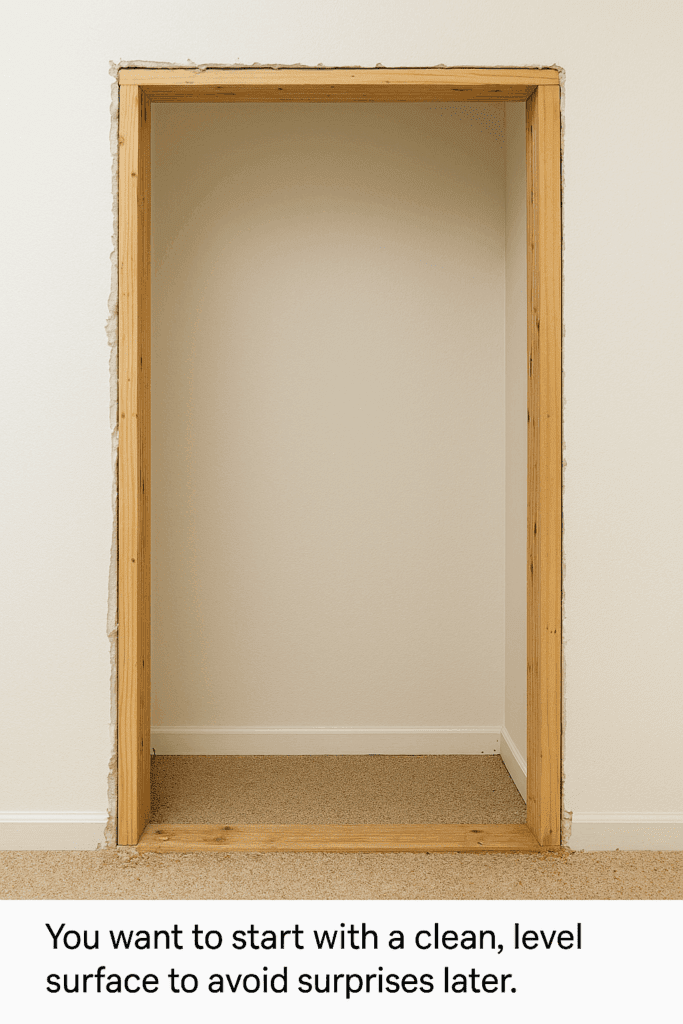I’ve done a lot of DIY home improvements over the years, but one of the biggest game-changers was when I learned how to install a prehung door myself. The first time, I was nervous—framing, leveling, shimming? It sounded complicated. But once I walked through the process step by step, it turned out to be a surprisingly manageable weekend project.
In this guide, I’ll break down exactly how I install a prehung door every time now—from tools and measuring to leveling and sealing—based on real experience, not theory.
📦 What Is a Prehung Door, Anyway?
Before I ever installed one, I assumed a door was just a door. But a prehung door is a door and its frame, already attached together by the manufacturer. You get the slab, hinges, jamb, and sometimes even the threshold all in one unit. This makes it easier for homeowners like us to install without needing advanced carpentry skills.
Why I Use Prehung Doors: I switched to prehung units after trying to replace a door slab inside an old, warped frame—it was a nightmare to align. Prehung solved all of that in one go.
🧰 Tools I Always Use for Prehung Door Installation
These are the must-haves I keep on hand every time I install one of these:
| Tool | Purpose |
|---|---|
| 4-ft Level | To ensure everything is plumb and square |
| Shims | For adjusting the frame |
| Power Drill/Driver | Driving screws |
| Tape Measure | Measuring the opening and gaps |
| Utility Knife | Trimming shims |
| Finish Nailer or Hammer | Attaching casing/trim |
| Caulking Gun | Air sealing gaps |
| Spray Foam | Insulating the jamb area |
📦 My Gear Picks (Amazon affiliate links):
- DEWALT 20V Max Drill Driver Kit – This one’s never failed me.
- Irwin Door Lock Installation Kit – Perfect for hardware installs.
- GREAT STUFF Window & Door Foam Sealant
📏 Step 1: Measure the Rough Opening (Twice)
The first thing I do—before buying the door—is measure the rough opening where it’s going. You want the opening to be about 2 inches wider and 1 inch taller than your door.

This space gives you enough room to slide the door in and fine-tune its position with shims.
🧹 Step 2: Remove the Old Door and Clean the Area
If you’re replacing a door, you’ll need to take everything out—including the old frame and trim. I use a pry bar to pop off casing and a reciprocating saw to cut the nails between the old jamb and the framing.
Tip: Vacuum up dust and leftover caulk before you insert the new unit. A clean space = a smooth install.

🚪 Step 3: Dry-Fit the New Door
Set the prehung door into the rough opening before securing anything. This gives you a chance to check the floor level, wall plumb, and how the door sits naturally.
What happened to me: On my first try, I found my subfloor dipped 1/4″ on one side, which threw off the whole frame. I corrected it by shimming under the jamb.
📸 Image Placement
- Alt text: Prehung door test fit in rough opening
- Caption: Always dry-fit your prehung door to catch alignment problems early.
🪚 Step 4: Shim and Level the Hinge Side First
This part matters most. I always start on the hinge side of the jamb. Use your level to get that side perfectly plumb. Then add shims behind each hinge—this supports the door’s weight long-term.
📸 Image Placement
- Alt text: Shim placement behind hinges on prehung door
- Caption: Get the hinge side solid before moving to the other jambs.
💡 Tip: I remove a factory screw from each hinge and drive a long 3″ screw into the framing for added strength.
🔩 Step 5: Secure the Frame
Once you’re happy with the position:
- Drill pilot holes through the jamb and shims.
- Drive screws through the jamb into framing (not just drywall).
- Check that the door still swings freely and closes properly.
📸 Image Placement
- Alt text: Screwing prehung door jamb into wall framing
- Caption: Use screws, not nails—so you can tweak things later if needed.
🧯 Step 6: Foam and Insulate the Gaps
Don’t forget this! I’ve skipped it once—and regretted it every winter. Fill gaps between the framing and the jamb with low-expansion foam or backer rod + caulk.
📸 Image Placement
- Alt text: Applying spray foam between the jamb and the framing
- Caption: Use low-expansion foam to avoid bowing the door frame.
🎨 Step 7: Install the Trim or Casing
Once the foam sets, I cut my shims flush and attach the new casing. A brad nailer works best, but finish nails and a hammer do the job too.
Affiliate options:
📸 Image Placement
- Alt text: Installing trim around a newly set prehung door
- Caption: Caulk the seams for a clean, finished look.
🔐 Step 8: Add the Hardware
Most prehung doors come pre-bored for a knob and latch. I use a hole saw kit if not, but lately I’ve stuck with factory-prepped slabs.
🔑 Kwikset Juno Entry Knob
🔒 Schlage Matte Black Lockset
📸 Image Placement
- Alt text: Installing a doorknob on a new prehung door
- Caption: Most doors are already drilled—just drop the hardware in.
✅ Final Checks Before You Celebrate
Before calling it done, I:
- Test the door swing and latch
- Adjust the strike plate if needed
- Run a bead of caulk where the casing meets the wall
- Touch up paint or stain as needed
Pro Tip: If the door rubs or doesn’t stay closed, it’s almost always a shim or screw that needs tweaking. Don’t force it—just fine-tune.
❌ Mistakes I Learned From
| Mistake | What to Do Instead |
|---|---|
| Nailing before leveling | Shim and plumb first—then screw it |
| Using too much foam | Go light, or the jam will bow inward |
| Go light, or the jamb will bow inward | Always dry-fit and test before screwing |
🧠 FAQs (Stuff I Wish I Knew Earlier)
Q: Do I need to remove the door from the frame to install it?
Nope. Leave it attached—it helps you spot swing issues during the install.
Q: Can I do this alone?
Yes—but an extra set of hands makes it way easier to hold the unit steady while shimming.
Q: What’s better: prehung or slab?
For older homes or beginners, prehung doors win every time. Less work, better results.
🪛 Final Thoughts: Installing a Prehung Door Is 90% Setup
Installing a prehung door isn’t rocket science—it’s all about prep, patience, and constantly checking the level constantly. Once you’ve done one, you’ll want to replace every door in the house.
If you’ve got a rough opening, a tape measure, and a little free time, this is the perfect weekend project to take on.




